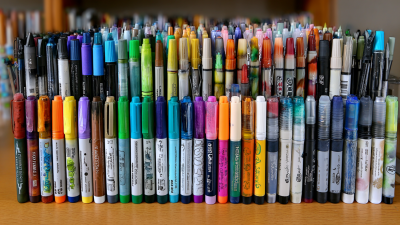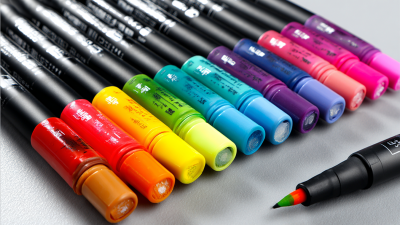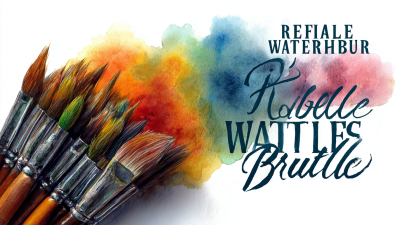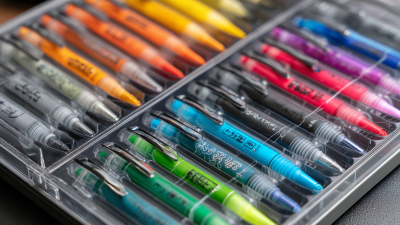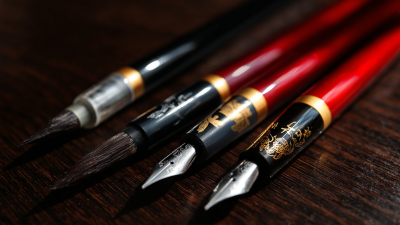Watercolor Marker Pens have revolutionized the way artists approach their craft, blending the ease of markers with the fluidity of watercolor. If you've ever been captivated by the vibrant hues and soft washes that these versatile instruments can produce, you're in the right place. In this blog, we will explore seven easy tips to help you master the art of using watercolor marker pens, whether you're a seasoned artist or a beginner looking to experiment. By incorporating these techniques into your projects, you'll not only enhance your skills but also elevate your artwork to new heights. Get ready to unlock the full potential of your watercolor marker pens and create stunning pieces that truly stand out!
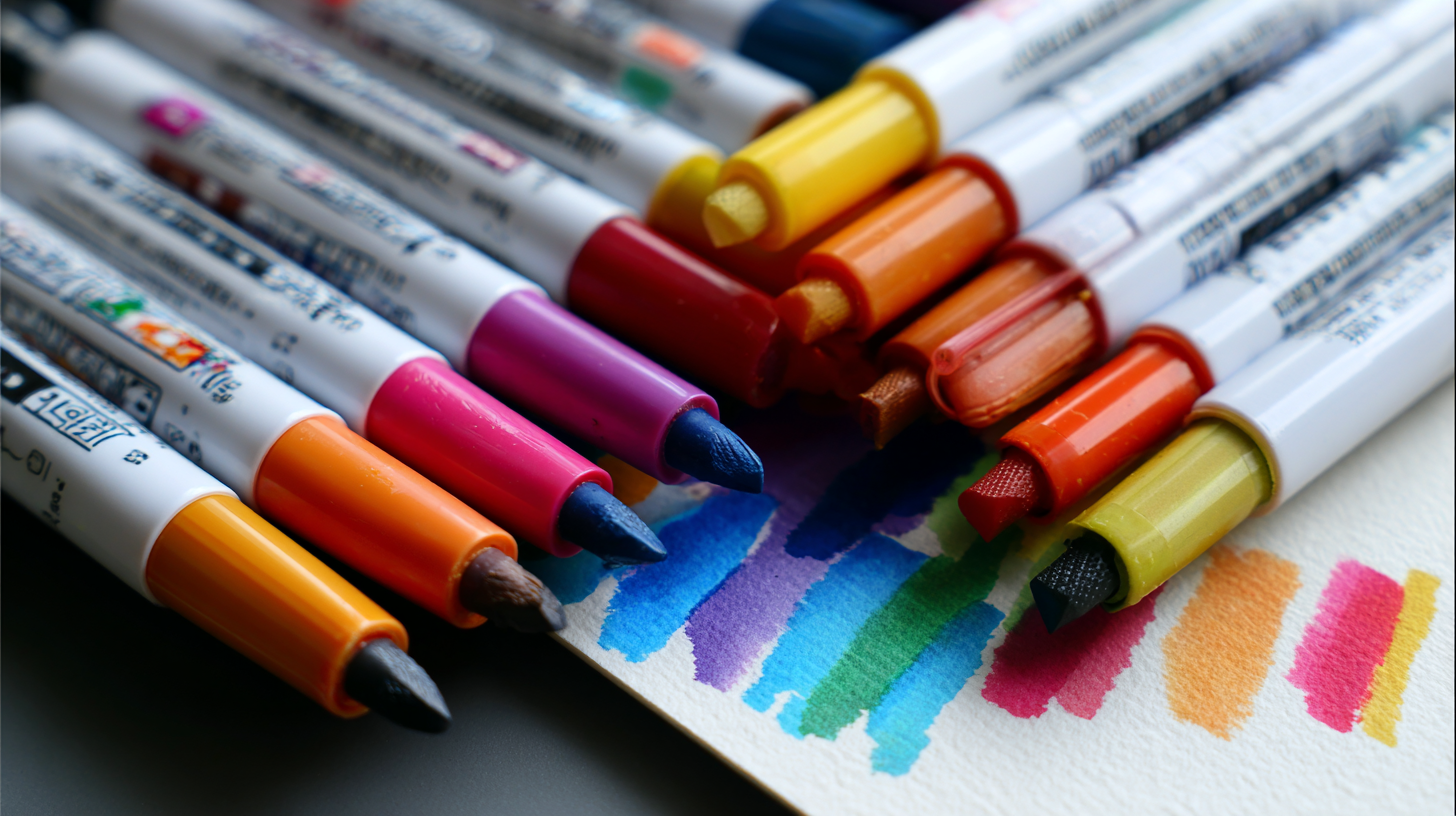
Watercolor marker pens are a unique and versatile tool that blends the precision of markers with the fluidity of watercolor paint. These pens are filled with water-based ink, allowing for vibrant colors that can be manipulated with water. This characteristic sets them apart from traditional markers, making them ideal for artists looking to create stunning, soft washes and gradients. When applying the ink directly onto paper, artists can achieve a bold, opaque look, or they can use a wet brush to blend and soften the colors, mimicking the effects of watercolor paint.
One of the key features of watercolor marker pens is their ability to layer colors seamlessly. Artists can apply multiple layers of different hues without disturbing the underlying ink, resulting in rich, complex color combinations. Additionally, these pens are often designed with dual tips—one fine tip for detailed work and another brush tip for broader strokes—offering artists the flexibility they need for various techniques. By understanding the unique capabilities of watercolor marker pens, artists can unleash their creativity and explore new possibilities in their art-making journey.
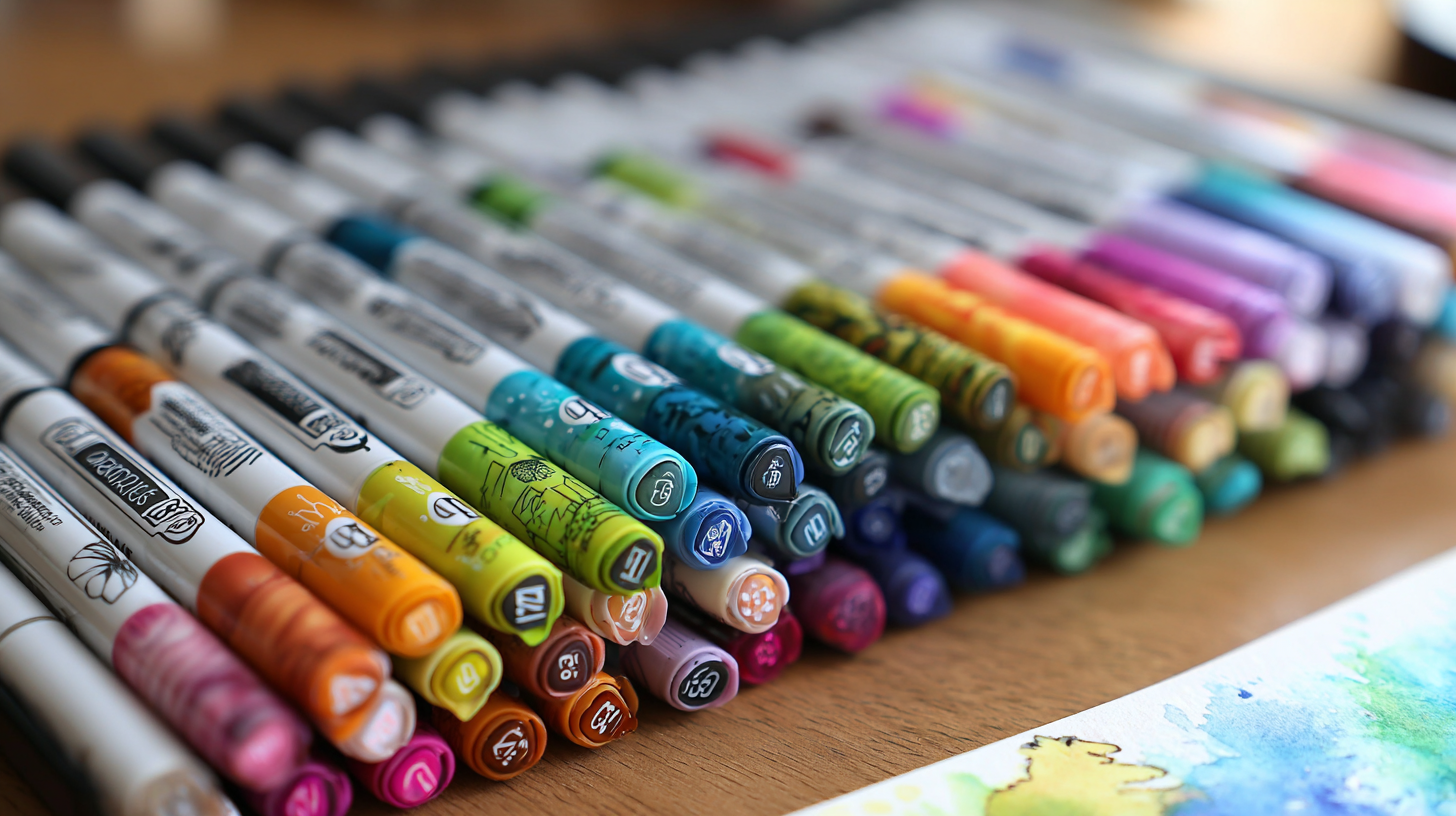
When diving into the vibrant world of watercolor marker pens, having the right supplies is essential for a successful artistic journey. Start by investing in a quality set of watercolor markers. Brands like Tombow and Zig offer a range of hues that blend smoothly and provide excellent pigmentation. It's wise to select a variety of colors, allowing you to experiment with different shades and gradients in your artwork.
Beyond the markers themselves, you'll also need a suitable paper that can handle the fluid nature of watercolor. Look for watercolor paper or mixed-media paper, as these are designed to absorb water without warping. Additionally, incorporating a water brush can enhance your experience. These brushes allow you to control the amount of water applied, making it easy to blend colors seamlessly. Don't forget to have some paper towels on hand to manage excess water and keep your workspace tidy. With these essential supplies, you'll be well-equipped to create stunning art with watercolor markers.
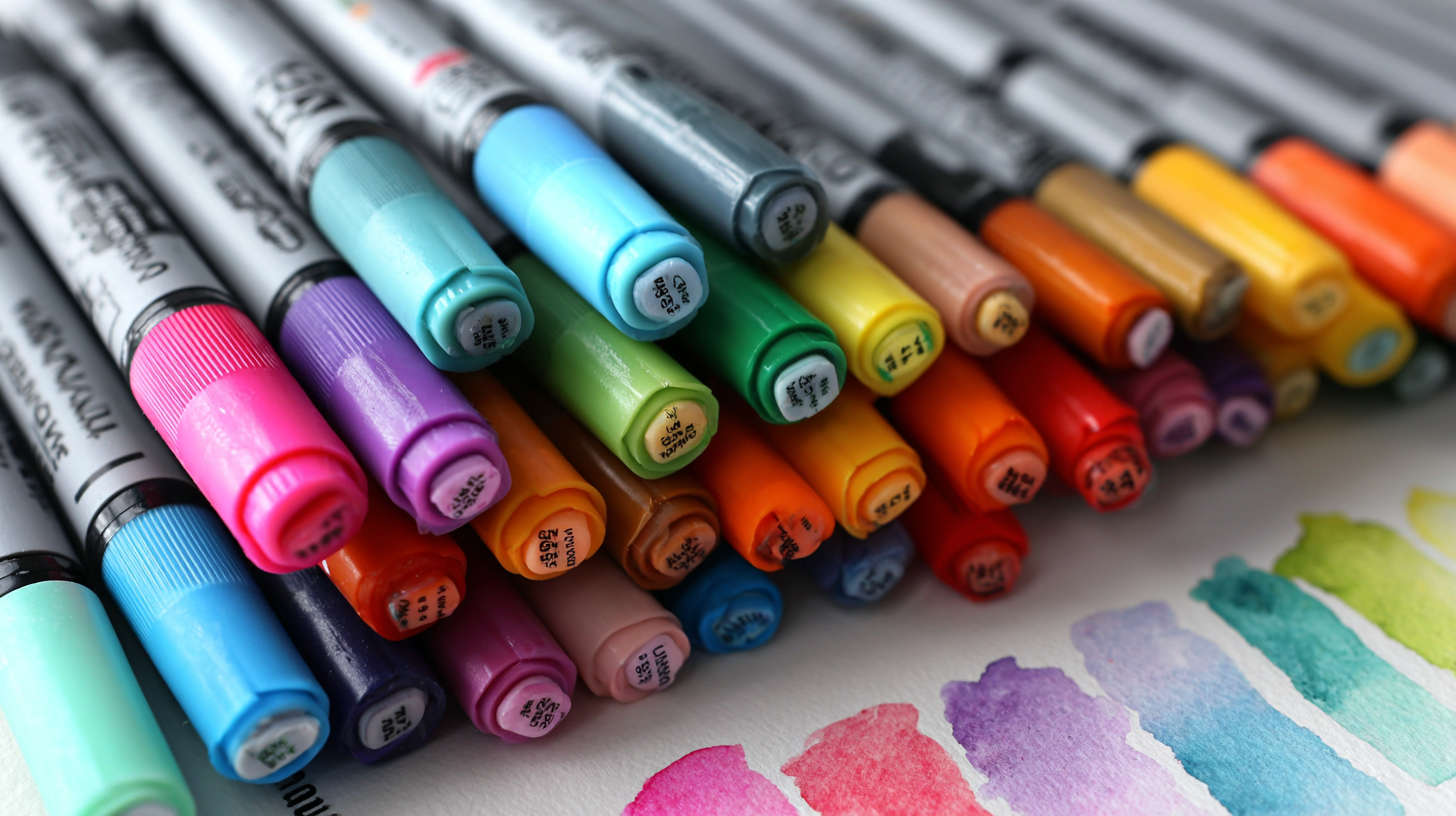 Blending and layering are essential techniques when working with watercolor marker pens, allowing you to create dynamic and vibrant effects in your art. To start blending, choose two or more colors that complement each other. Apply the lighter shade first to your desired area, then softly overlay the darker shade while the first layer is still wet. Use a wet brush or a blender pen to gently mix the colors together, creating a seamless transition that adds depth to your artwork.
Blending and layering are essential techniques when working with watercolor marker pens, allowing you to create dynamic and vibrant effects in your art. To start blending, choose two or more colors that complement each other. Apply the lighter shade first to your desired area, then softly overlay the darker shade while the first layer is still wet. Use a wet brush or a blender pen to gently mix the colors together, creating a seamless transition that adds depth to your artwork.
Layering is another powerful technique that can enhance the richness of your piece. Begin with a base layer of color, allowing it to dry completely before adding additional layers on top. This not only builds intensity but also allows for controlled highlights and shadows. Consider using a lighter color for highlights and deeper shades for shadows, layering gradually to reach your desired effect. Remember to utilize the right amount of water to keep the colors vibrant without turning muddy—maintaining the integrity of your artwork is key.
Experimenting with these techniques can unleash your creativity and take your watercolor marker art to a new level. By practicing blending and layering, you'll find your own style and methods that make each piece uniquely yours.
Watercolor marker pens are a versatile and fun medium to explore for artists of all ages. If you're eager to experiment with them, there are countless creative ideas that you can try out. One engaging approach is to combine watercolor markers with traditional watercolor techniques. Start by sketching a light outline of your subject using the markers, then gently wash over the lines with a wet brush to blend the colors and create stunning gradients. This technique not only adds depth to your artwork but also allows for limitless color experimentation.
Another fun way to utilize watercolor marker pens is by incorporating them into playdate activities for kids. Set up an art station where children can unleash their creativity by drawing, stamping, or even creating mixed media collages with various materials. You can encourage the little ones to make their own greeting cards or nature-inspired artwork by using simple leaf stencils. Such projects not only stimulate their artistic talents but also provide an excellent opportunity for them to bond with friends. With watercolor markers, the options are boundless, making every art session a chance for discovery and fun!
| Tip Number | Tip Description | Suggested Techniques |
|---|---|---|
| 1 | Start with a Sketch | Outline your artwork lightly in pencil before coloring. |
| 2 | Use a Blending Tool | Experiment with water brushes for smooth transitions. |
| 3 | Layer Your Colors | Apply multiple layers to create depth and richness. |
| 4 | Work Quickly | While the ink is still wet for optimal blending. |
| 5 | Experiment with Textures | Create textures using salt or sponges for unique effects. |
| 6 | Mix on a Palette | Combine colors on a plate and apply for custom shades. |
| 7 | Practice, Practice, Practice | The more you use watercolor markers, the better you'll get! |
When it comes to watercolor marker pens, proper maintenance and storage are key to ensuring their longevity and performance. These versatile tools, used by both beginners and professionals, benefit from specific care practices. According to industry reports, maintaining a stable environment—ideally, a cool and dry storage space—can significantly extend the lifespan of your watercolor markers. It's recommended to store them horizontally, which helps to prevent the nibs from drying out and ensures even ink distribution.
In addition, regularly checking and cleaning the tips of your markers can keep them in optimal condition. A gentle wipe with a damp cloth can remove any buildup that might affect the flow of ink. Research shows that users who adhere to these maintenance tips report a 20% increase in the effectiveness and vibrancy of their mark-making.
Furthermore, it's essential to keep the caps tightly sealed when not in use, as exposure to air can lead to premature drying. By following these simple yet effective storage and care tips, artists can optimize their watercolor pen experience and create stunning artwork consistently.
